I've developed a chatbot that communicates with SharePoint on Premise,
When I run the chatbot in Emulator its work.
But When I run at Web that hosted outside of SharePoint, it does not work.
Herewith my screenshot of Error On Azure, From the result of Error is starting from XMLReader and SyndicationFeed

Herewith my Souce Code.
private async Task ProcessRSSAsync(ITurnContext<IMessageActivity> turnContext, LuisResult luisResult, string intent, CancellationToken cancellationToken)
{
var questionluis = turnContext.Activity.Text;
await turnContext.SendActivityAsync("intent recognize" + intent);
var intentresut = intent;
await turnContext.SendActivityAsync("Get LUIS Entity");
await turnContext.SendActivityAsync(string.Join("\t", luisResult.Entities.Select((entityObj) => entityObj.Entity)));
var entityfound = string.Join("\t", luisResult.Entities.Select((entityObj) => entityObj.Entity));
string spxurl = @"https://intra.aspac.com/sites/sg/daw/_layouts/15/srchrss.aspx?k=*%20ListId:7BC0F2C3-6366-48B8-B88A-8738BE1F9C31";
await turnContext.SendActivityAsync("Intent: " + intent.ToString() + " Entity: " + entityfound.ToString());
////---------------------------------------------------------------------------------------------
//22112019
try
{
//#ES09122019
var credentials = new NetworkCredential("email@example.com", "Pa$$w0rd", "sg.kworld.com");
var handler = new HttpClientHandler { Credentials = credentials, UseDefaultCredentials = false };
var client = new HttpClient(handler);
client.BaseAddress = new Uri("https://intra.aspac.com/sites/sg/daw/");
HttpResponseMessage resp = client.GetAsync("_layouts/15/srchrss.aspx?k=" + entityfound + "*%20ListId:7BC0F2C3-6366-48B8-B88A-8738BE1F9C31").Result;
string respString = resp.Content.ReadAsStringAsync().Result;
if (resp.StatusCode == HttpStatusCode.OK)
{
await turnContext.SendActivityAsync("Connected");
//Success 06122019 .
try
{
string spurl = @"https://intra.aspac.com/sites/sg/daw/_layouts/15/srchrss.aspx?k=*%20ListId:7BC0F2C3-6366-48B8-B88A-8738BE1F9C31";
XmlSecureResolver resolver = new XmlSecureResolver(new XmlUrlResolver(), spurl);
resolver.Credentials = new NetworkCredential("email@example.com.sg", "Pa$$w0rd", "sg.kworld.com");
XmlReaderSettings settings = new XmlReaderSettings();
settings.DtdProcessing = DtdProcessing.Parse;
settings.ValidationType = ValidationType.DTD;
settings.XmlResolver = resolver;
XmlReader reader = XmlReader.Create(spurl, settings);
SyndicationFeed feed = SyndicationFeed.Load(reader);
reader.Close();
var attachments = new List<Attachment>();
foreach (SyndicationItem item in feed.Items)
{
//Get Title,Description,URL
String title = item.Title.Text;
String description = item.Summary.Text;
String link = item.Links.FirstOrDefault().Uri.ToString();
//Hero Card
var heroCard = new HeroCard(
title: item.Title.Text,
// subtitle: description,
buttons: new CardAction[]
{
new CardAction(ActionTypes.OpenUrl,"Learn More",value:link)
}
).ToAttachment();
attachments.Add(heroCard);
}
var reply = MessageFactory.Carousel(attachments);
await turnContext.SendActivityAsync(reply);
await ProcessCosmoDBStorageLUISAsync(turnContext, questionluis, intent, entityfound, respString, cancellationToken);
}
catch (Exception ex)
{
await turnContext.SendActivityAsync(ex.ToString());
}
}
}
catch (Exception ex)
{
await turnContext.SendActivityAsync("Sorry,Currently Server Under Maintenace");
await turnContext.SendActivityAsync(ex.ToString());
}
}
any solution for this and suggestion?
